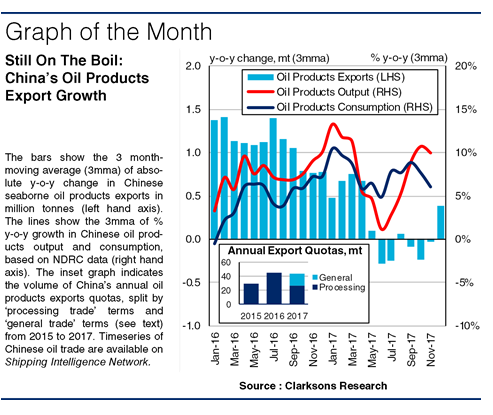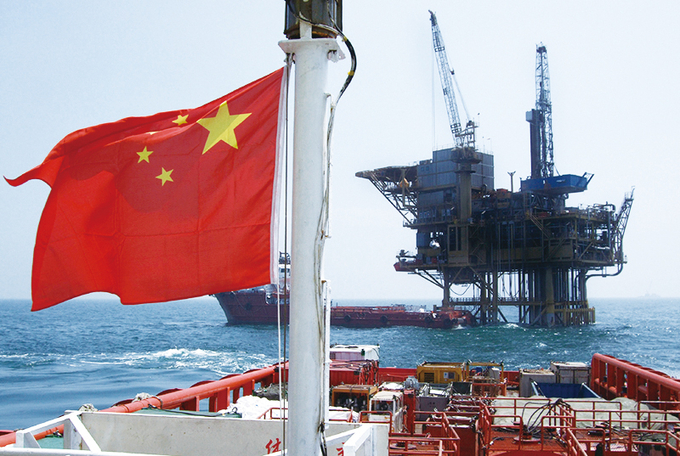
Against a backdrop of expanding domestic refinery capacity, China has emerged as a more significant exporter of oil products in recent years, with the country’s seaborne exports doubling between 2013 and 2016 to total 36mt. In 2017, while a number of developments contributed to a slower rate of expansion in shipments, China’s seaborne oil products exports still rose to reach a new record.
In full year 2017, Chinese seaborne exports of oil products grew by 6% to total 39mt, compared to imports of 30mt, and marking the second consecutive year in which China was a net seaborne oil products exporter. The continued rise in exports last year was largely driven by the ongoing oversupply of oil products in China, a situation that has developed following the start up of a significant amount of refinery capacity in recent years, including CNPC’s Kunming Refinery (13mtpa) and CNOOC’s Huizhou Refinery Phase 2 (10mtpa) in 2017, as well as growing output by teapot refiners.

However, the rate of growth in China’s oil products exports in 2017 was much slower than in 2016, when seaborne exports surged by more than 50%. This partly reflected relatively improved downstream demand, particularly for gasoline and diesel in 1H 2017, supported by greater car usage and construction activity. According to the NDRC, China’s oil products consumption grew by 7% in 2017, a similar pace to oil products output.
Government policies also had an influence. In 2017, China issued a total of 43mt of oil products export quotas, lower than the 45mt granted in 2016, capping upside to exports. However, the type of granted quotas was different. Historically, the vast majority of China’s oil products exports utilised ‘processing trade’ quotas, where refiners are exempt from taxes on crude imports and oil products exports, but where the volumes and timing of shipments are tightly controlled. While the volume of ‘processing trade’ quotas fell from 45mt in 2016 to 26mt in 2017, quotas for 17mt of ‘general trade’ were granted. ‘General trade’ exports are subject to extra costs, but since late 2016 refiners exporting via this method have been able to obtain some tax rebates. The greater flexibility and potential for larger profits under ‘general trade’ proved attractive to some refiners and helped support the further increase in exports.

Meanwhile, although teapot refiners were granted 1.5mt of export quotas in 2016, low quota utilisation (c.60%) reportedly led to no such allocations being granted in 2017, with oil majors accounting for all of China’s products exports last year.
Looking ahead, there may be further upside potential to China’s oil products exports. While growth in exports stalled for part of 2017, shipments in December surged to a new high, whilst the first batch of export quotas granted in 2018 is up 30% y-o-y at 16mt (all under the terms of ‘general trade’). Domestic oversupply of oil products looks unlikely to be resolved quickly, and the current policy approach seems supportive, although risks remain. Overall, whilst exports grew more slowly in 2017 than in 2016, China’s oil products exports have still continued to play a growing global role.
(Source : Clarkson Research Services Limited)

















